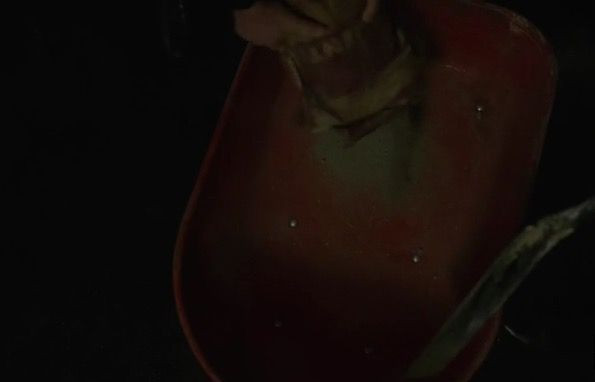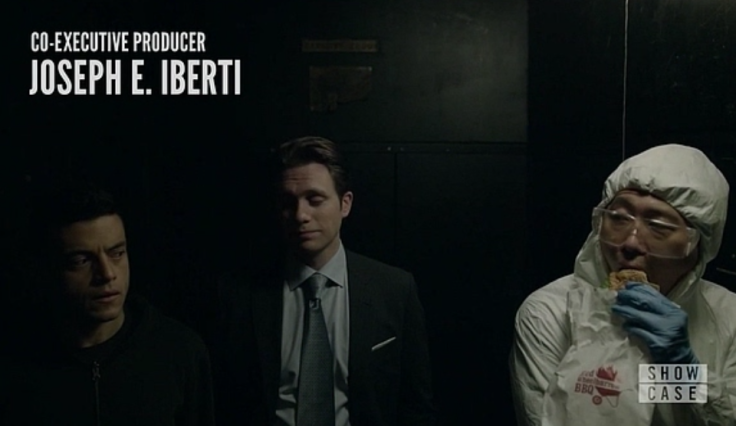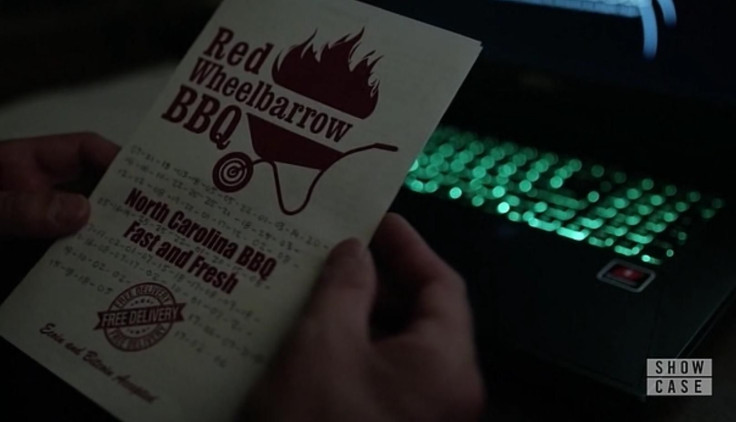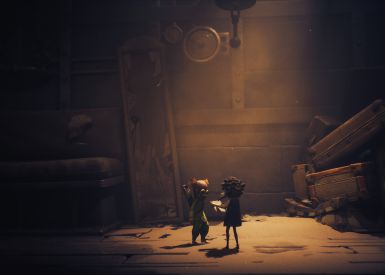Red Wheelbarrow is the title of a new Mr. Robot book to be released Nov. 1, though you may be familiar with the phrase if you’ve watched the first two seasons of the hit USA series. It’s no coincidence creators Sam Esmail and Courtney Looney also chose Red Wheelbarrow for the title because it will be a theme explored in Season 3.
“Red Wheelbarrow, on a very surface level, is a reference to this amazing [William] Carlos Williams poem that a lot of people find pretentious. I don't. I think he’s amazing,” Esmail told fans at New York Comic Con.

However, Red Wheelbarrow is more than just a poem to Elliot. The phrase becomes a code word and what Elliott associates with it becomes an important part of Mr. Robot Season 3.
“Tyrell, in the final episode of Season 2, quotes this poem to Elliot and there’s a bond formed between the two. That word, that poem, that phrase, Red Wheelbarrow, sticks in Elliot’s mind and becomes a code word that we’ll later explore in Season 3 that becomes inspiration for the book,” Esmail explained.
The poem reads as follows:
so much depends
upon
a red wheel
barrow
glazed with rain
water
beside the white
chickens
What the poem means to Elliot goes beyond the words themselves. In jail, Hot Carla (whose name may be a reference to the author, William Carlos Williams) burns books in a red wagon. She’s a pyro who eventually burns Elliot’s journal too, which had ‘Red Wheelbarrow’ scratched onto the front in the series. The inside cover of Red Wheelbarrow (released by The Hollywood Reporter) reveals Elliot actually asked Hot Carla to burn his journal. After he goes off on a rampage in group therapy, Elliot throws his journal in the trash can. Carla burns it after Elliot gets addicted to Adderall, successfully getting rid of Mr. Robot, that is, until he crashes and his delusions come back.

"It was hard for me not to burn it, like he wanted," Carla writes on the inside jacket. "It was nice to think this journal was something only between Elliot and me, but I know you deserve to read it too."
Red Wheelbarrow also means something to Tyrell Wellick. The poem were the only words his father knew in English. “I use it as a reminder,” Tyrell says in the Season 2 finale. “A reminder of him. And a reminder of what I never want to become.”
This symbolism is no coincidence. Like Tyrell, Elliot is scared to become his father. The burning of his journal, which he wrote in an effort to maintain his sanity and block out Mr. Robot, is Elliot separating himself from his father.
Elliot’s Red Wheelbarrow journal isn’t the first book Hot Carla burns throughout Season 2. The Samuel Beckett play Waiting For Godot and Ken Kesey’s One Flew Over the Cuckoo’s Nest are two more. Both, like Red Wheelbarrow, are open to existential interpretations about the human condition and consciousness that are also applicable to Elliot.

One Flew Over the Cuckoo’s Nest is a bit more direct. The book is narrated by Chief, a schizophrenic in a mental hospital who has delusions similar to Elliot’s. He believes society is controlled by an overarching institution he calls “The Combine.” The characters believe the world is a dichotomy -- they refer to real world as ‘The Outside’ -- which is ironic, because Elliot refuses to separate his two realities.

The meaning of Waiting for Godot, on the other hand, is a bit more obscure. There are many interpretations, but they all have to do with the questions surrounding human existence and time -- both central themes in Mr. Robot. Firstly, it’s never clear whether Godot is real or not. At the center of both stories is the idea of waiting for something that never comes, or in Elliot’s case, something to leave that never does (i.e. Mr. Robot). Furthermore, Elliot’s search for deeper meaning in his life seems, like that of Godot’s protagonists Vladimir and Estragon, fated to never fully come to fruition.

That’s why when Mr. Robot reappears, Elliot asks Hot Carla to burn his own book. “I was on a route to cure myself of Mr. Robot,” Elliot says as he lights a match and smokes a cigarette, watching his journal--that was supposed to leave Mr. Robot behind -- burn in a red wagon. Burning the journal was Elliot's way of throwing away the idea he has control over Mr. Robot’s fate. He’s finally fully accepting that control itself is an illusion.

There are also multiple times an actual red wheelbarrow (or wagon) appears in the series. In Elliot’s prison delusions, Hot Carla burns all her books in the red wagon. We later find out there’s actually no red wagon, just a sewer grate. In the scene where Elliot takes over a dozen Adderalls and OD’s -- the cement that saves his life is mixed in a red wheelbarrow and funneled down his throat.

There’s also a seemingly unrelated instance of a red wheelbarrow in the Season 2 finale. When Tyrell brings Elliot to his hideout, a worker is carrying a bag of fast-food barbeque and the name of the restaurant is Red Wheelbarrow. It’s also the same menu that Elliot used to decipher messages from the Dark Army earlier on in the series.


Expect the Mr. Robot book to delve deeper into Elliot’s interpretation of Red Wheelbarrow. There’s got to be a specific reason why he penciled the words into the front of his composition book early in Season 3. But be warned, Sam Esmail said at the Mr. Robot New York Comic Con panel that “understanding everything will never probably happen” even if you read the new book. So while Red Wheelbarrow will certainly contain some insight into Mr. Robot Season 3, in true Esmail fashion, the clues will be far from straightforward.
Red Wheelbarrow is available Nov. 1.

















